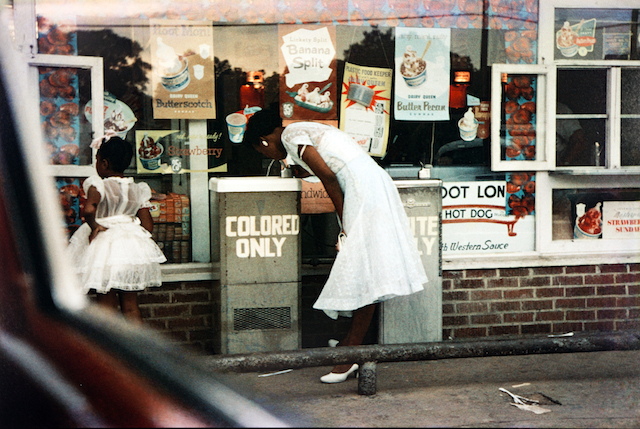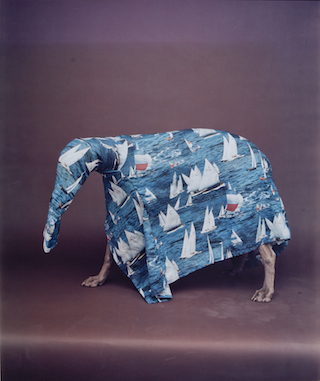Sweeping New Exhibit Shows How Photography Has Evolved
By Chicagoist_Guest in Arts & Entertainment on Jan 25, 2016 8:33PM

Gordon Parks, Drinking Fountains, Mobile, Alabama, 1956. Courtesy of the Museum of Contemporary Photography.
By Corrie Thompson
For two centuries, we’ve captured visions of ourselves and our lives in photographs. Today's Instagram accounts and selfies may seem worlds away from early analog photography, but "MoCP at 40" makes you think twice. This 40th anniversary exhibition at Columbia College's Museum of Contemporary Photography demonstrates how photography has evolved, and how our collective memory only grows richer as the medium changes.
I took a tour of the exhibit, which opens Monday, with curator Allison Grant. We started in the exhibit’s focal point: the West Gallery, filled with a chronological sweep of photos from the museum’s collection of over 14,000 pieces. The earliest photo dates back to 1867, only a few decades after photography was first invented; the newest was taken just last year.

Elliott Erwitt, Jackie Kennedy at Funeral, 1963, portfolio 1980. Courtesy of the Museum of Contemporary Photography.
As you move through the exhibit, camera technology improves, history unfolds, and artistic movements come and go. Harold Edgerton’s 1938 Football Kick, one of the first color photos taken with a strobe flash, hangs close to Elliott Erwitt’s 1963 photo of Jackie Kennedy at her husband’s funeral. On another wall, photography plays a crucial role in the rise of performance artists Vito Acconci and Marina Abramović.
Big names like Ansel Adams and Diane Arbus share space with obscure works like the gory mezzotint collage, Soldier and Bride, and a pinhole camera image captured in artist Ann Hamilton’s mouth. Digital color prints dominate the more recent end of the exhibit, pieces that consider globalization, recession, and identity. A Chinese factory lunch, probably featuring more uniform-clad workers than there are photos in the exhibition, brims with personal histories we can't know.
In another room, letters and publications from the archive give a glimpse into the museum’s relationship with artists such as Dorothea Lange, whose familiar image Migrant Mother is on view in the West Gallery. Meanwhile, the Mezzanine Gallery highlights the breadth of techniques used in pieces from Andy Warhol’s polaroid portraits to a digital cat collage by Richard Krueger.
In the third floor stairwell, an installation commissioned from Aimeé Beaubien weaves photos from three different collections into soft, basket-like objects, suspended by neon string, cascading into a group of ceramic whiskey jugs made by the artist’s husband—whose jug collection exceeds the space of their home, Grant said. The installation’s activity mirrors the main gallery’s overwhelming display, exploring the impulse to collect on both a personal and institutional scale.

William Wegman, Carribbean Ant Eater, 1988. Courtesy of the Museum of Contemporary Photography.
The Print Study Room on the third floor houses portfolios from regional artists loaned to the Museum’s ongoing Midwest Photographers Project (MPP). This room is typically only available by appointment, but it features several bodies of work that are open to the public during the anniversary exhibition. Grant explained that MoCP mostly works with living artists, actively seeking out new talent—some MPP artists first connect with the museum through their open submission program, a rare policy for most museums and galleries.
One standout in the Print Study Room is a portfolio by artist John Steck Jr., a group of nine hazy photos in muted colors. These prints have not been chemically “fixed,” so that by the end of the exhibition their exposure to light will fade the images to obscurity, questioning the permanence of photography and evoking the emotional process of losing memories.
Through its impressive breadth, "MoCP at 40" demonstrates photography's diversity and complexity. Although photos are thought to be truthful and even permanent, the exhibit confronts those expectations so that whether we come to the museum as seasoned photographers or casual admirers, we are challenged to investigate the told and untold moments in each one.
Corrie Thompson is a visual artist figuring out the post-grad life in Humboldt Park with her husband and toddler.